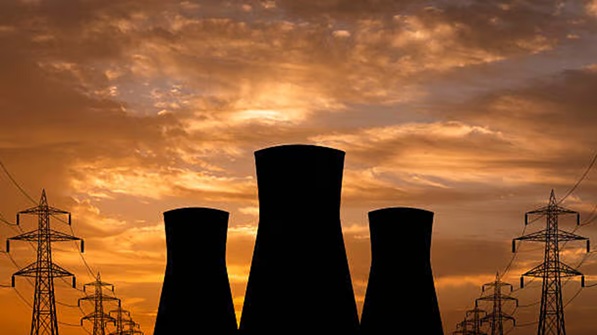| (GS Paper – III: Energy and Environment) |
In the Union Budget 2025–26, the Government of India announced an ambitious “Nuclear Energy Mission” with the goal of achieving 100 GW of nuclear power capacity by 2047. This mission forms a vital part of India’s long-term energy transition strategy and the “Viksit Bharat @2047” vision, aimed at ensuring sustainable, secure, and self-reliant energy growth.

Current Status and Targets
|
Component
|
Status / Target
|
|
Current Installed Capacity (2025)
|
8.18 GW (from 22 reactors)
|
|
Target by 2031–32
|
22.48 GW
|
|
Long-Term Target by 2047
|
100 GW
|
|
Key Agencies
|
BARC (Bhabha Atomic Research Centre), NPCIL (Nuclear Power Corporation of India Ltd), DAE (Department of Atomic Energy)
|
|
Major Technological Focus
|
BSRs (Bharat Small Reactors) and SMRs (Small Modular Reactors)
|
Key Features of the Mission
- Small Modular Reactor (SMR) Initiative
- SMRs are next-generation reactors (≤300 MW) designed for safety, flexibility, and rapid deployment.
- BARC aims to operationalize at least five SMRs by 2033.
- Bharat Small Reactors (BSRs)
- 220 MW Compact Pressurized Heavy Water Reactors (PHWR) based entirely on indigenous design.
- Intended for captive use, such as industrial hubs or repurposing retired coal plants.
- Private Sector Participation
- Amendments to the Atomic Energy Act (1962) and Civil Liability for Nuclear Damage Act (2010) aim to attract private investment.
- Public–Private Partnership (PPP) models are being introduced for research, financing, and execution.
- Indigenous Technology and Research
- India aspires to be a global leader in thorium-based fuel cycles.
- Ongoing work on Advanced Heavy Water Reactors (AHWRs) and Fast Breeder Reactors (FBRs) by BARC and NPCIL.
Significance of Nuclear Energy for India
- Reliable and Continuous Power Supply
- Unlike solar and wind, nuclear power provides 24×7 base-load energy with minimal fluctuation.
- Low Land Requirement
- As per Economic Survey 2023, solar plants require ~300 times more land than nuclear plants for equivalent power generation.
- Low Carbon Emissions and Waste Generation
- Near-zero greenhouse gas emissions and limited solid waste make nuclear energy environmentally sustainable.
- Leveraging Thorium Reserves
- India holds about 25% of the world’s thorium reserves, key to long-term energy security.
- Energy Self-Reliance and Net-Zero Goals
- Indigenous nuclear reactors and fuel cycle technologies will reduce dependence on fossil fuels and imports.
Major Challenges
- Public Safety and Social Acceptance
- Accidents such as Chernobyl and Fukushima have raised public apprehensions; strong safety communication is essential.
- Uranium and Mineral Dependence
- India has limited domestic uranium reserves, leading to import dependency.
- Sulphuric acid shortage hampers uranium extraction efficiency.
- Technological Monopoly
- Advanced reactor technologies are dominated by the U.S., Russia, Japan, and France.
- Financial and Regulatory Hurdles
- Nuclear plants are capital-intensive with long gestation periods.
- Complex licensing and environmental clearance procedures delay projects.
- Fuel Supply Chain Constraints
- International control under the Nuclear Suppliers Group (NSG) poses uncertainty in fuel supply.
Way Forward
- Simplifying Regulatory Framework
- Develop standardized licensing, safety, and waste management norms for SMRs.
- Green Finance and Taxonomy Inclusion
- Classify nuclear power under green taxonomy to enable low-cost financing and global investment.
- International Cooperation and Technology Transfer
- Strengthen collaboration with the IAEA and countries like France, Russia, the USA, and Japan for joint R&D and safety standards.
- Accelerate Thorium-Based Third Stage
- Prioritize projects like AHWRs and Fast Breeder Reactors to utilize India’s thorium potential.
- Public Engagement and Transparency
- Encourage community consultation, safety training, and benefit-sharing models to build trust and social acceptance.
Conclusion
- India possesses world-class scientific institutions, vast thorium reserves, and a strong policy vision for sustainable energy transformation.
- The Nuclear Energy Mission integrates these strengths to advance India toward energy self-reliance and net-zero emissions.
- If implemented with balanced reforms in regulation, financing, and indigenous innovation, India can not only achieve 100 GW nuclear capacity by 2047, but also emerge as a global leader in safe, clean, and sustainable nuclear energy production.



